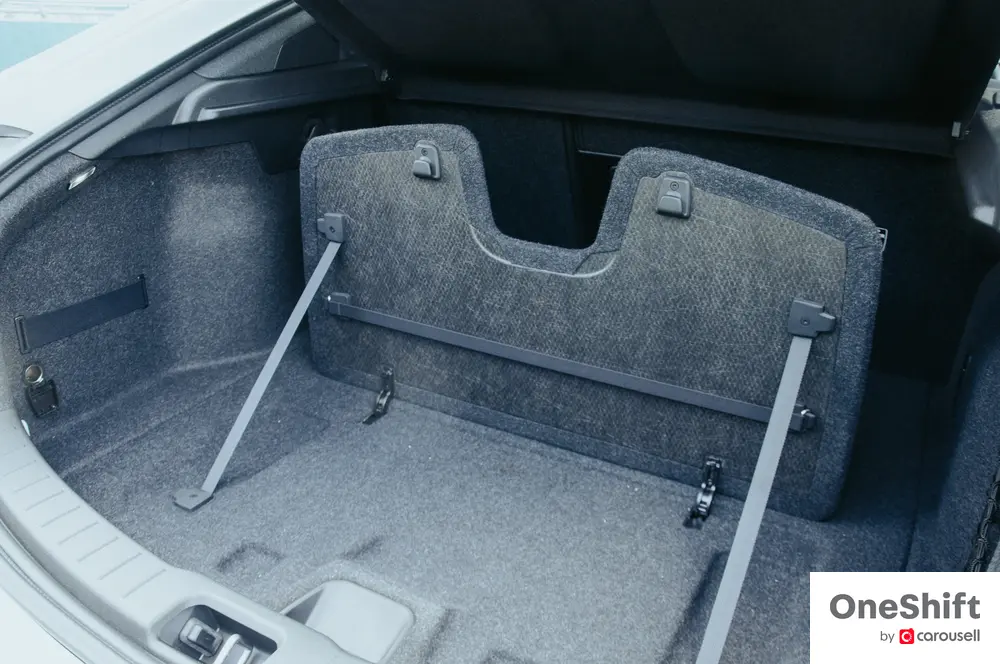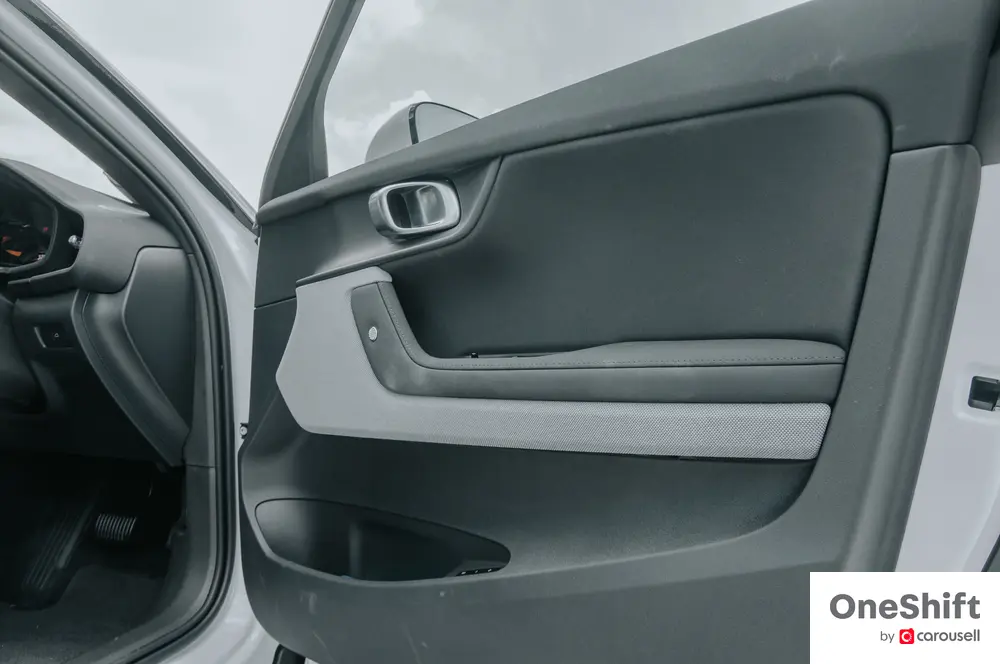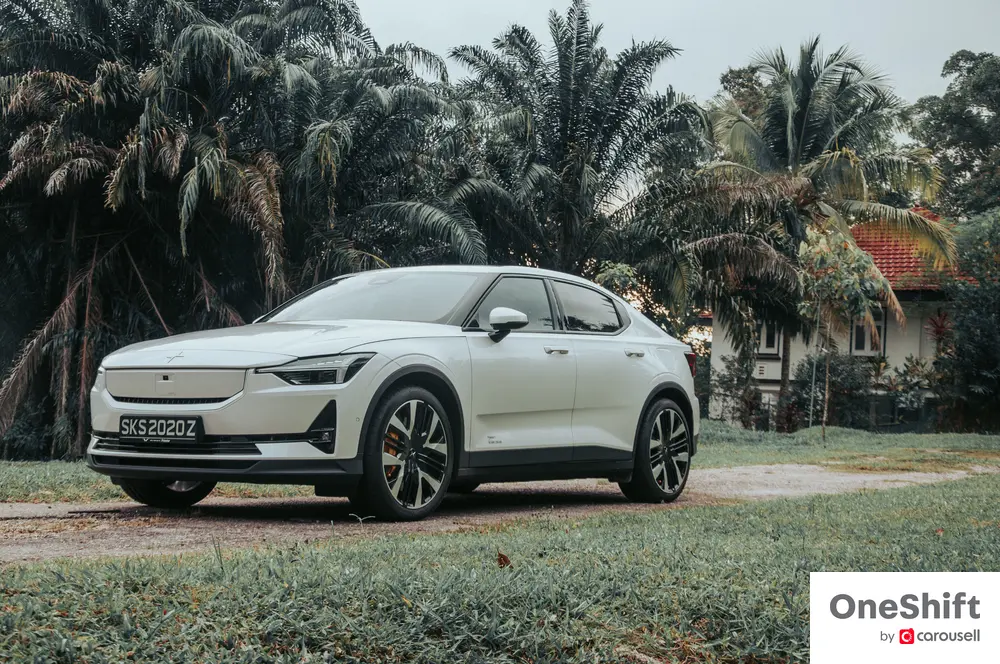2024 Polestar 2 LRDM Review: Effective Mid-Life Update
The Polestar 2 receives crucial updates that keep it relevant in the market.







Last year, we reviewed the Polestar 2 and likened it as a credible alternative to the ever-popular Tesla Model 3. A year on, we have a mid-cycle update from the Swedish “four-pointed star” that offers improved performance, increased range, and of course, greater efficiency. Will this prove to be a compelling proposition in the current market? Let’s find out.

How different does the facelifted Polestar 2 look?
First off, one will be hard pressed to find distinct differences between the facelifted Polestar 2 and its predecessor. Squint hard enough and you will notice an all-new plastic front fascia that replaces the old conventional black grille. The center of the new plastic-clad grille houses what Polestar calls the “SmartZone”, where most of its forward-facing sensors and camera tech is placed.

What performance and range upgrades are there in the facelifted Polestar 2 LRDM?
Currently only available in Long Range Dual Motor form with the Performance Pack, this iteration will deliver 476 hp and up to 740 Nm of torque, a rather significant improvement from the pre-facelifted car’s figures of 408 hp and 660 Nm of torque. This propels the car from 0-100km/h in 4.2 seconds, up from 4.7 seconds previously whilst maintaining the same top speed of 205 km/h. Notably, this makes the facelifted Polestar 2 quicker in the century sprint than the range-topping Tesla Model 3.
In terms of range and efficiency, the facelifted car is said to be capable of covering approximately 568 km on a full charge, which is a healthy gain of more than 100 km over the pre-facelifted car. Realistically, we were getting about 480 km of usable range (albeit with a fair bit of spirited driving), which, all things considered, is a very healthy figure that should put your range anxiety concerns at rest. This is made possible by the car’s larger 82 kWh battery, which is up from 75 kWh previously.

What has changed in the interior of the facelifted Polestar 2?
Inside, the car remains relatively unchanged from the pre-facelifted version. Expect the same panoramic roof that blocks out 99.9% of UV rays, 13-speaker Harmon Kardon sound system with Dolby Atmos, and its iconic wetsuit-like WeaveTech upholstered seats. A Nappa-clad option, one that we personally would prefer, is also available at an extra cost. That being said, the car is still built on Volvo’s CMA (non-EV) platform, which sadly means that interior space is still compromised, especially with the transmission tunnel running through the rear center seat.
Overall, the sense we got from our extended drive is a thoroughly well-built car inside and out. Every panel, nook and cranny is well-put together and sturdy to touch. It exudes proper quality, and gives the impression that it can withstand a lot of daily abuse.

How has the infotainment changed in the facelifted Polestar 2?
Apple users will be pleased to know that the updated infotainment system powered by Android Automotive OS is now CarPlay enabled, something that was not made available in the pre-facelifted model (until an over-the-air update was rolled out in June 2023). The system also includes a three-year data coverage at LTE speeds, which mean that you will be able to seamlessly binge on your Netflix dramas whilst charging your car at your nearest charging station.
With LTE connectivity, the facelifted Polestar 2 will (at least theoretically) be future-proof, and continue to receive over-the-air updates for its infotainment system, apps, as well as car systems.

How does the facelifted Polestar 2 LRDM drive?
We love the fact that the facelifted Polestar 2 does not have an “on” or “start/stop” button. Simply enter the vehicle (and buckle-up of course), engage the drive mode selector and off you go, making it incredibly hassle free especially during hurried commutes around town.
From the get-go, the car feels very capable. Handling is incredibly balanced, thanks to fully adjustable Ohlins Dual Flow Valve dampers and an improved front asynchronous motor that gives the car a rear-biased setup. This, combined with its pin-sharp steering, makes it reasonably nimble with minimal understeer when pushed through corners – a proper engineering feat for a two-tonne car. Our only gripe with the steering was its relative lack of feedback—still a great setup nonetheless. Combine the car’s handling prowess with 740 Nm of instant torque on tap, and you have a very capable overall package indeed. Ride comfort can be improved though, as the default suspension setting is a little too firm, which may be a tad harsh for some daily drivers. Fret not, Polestar will be happy to configure it to customer preferences, with 22 levels of firmness available.

What’s the verdict on the facelifted Polestar 2 LRDM?
The improvements made to the facelifted Polestar 2 are subtle, but ticks the right boxes for a good proposition in today’s market. You get the sense that this is a well-built, dependable car that will withstand the test of time. However, this model in question is now more expensive than the pre-facelifted model. At S$196,000 before COE, the facelifted Polestar 2 LRDM is significantly pricier than the likes of the Tesla Model 3 (S$120,000 before COE) and newly launched BYD Seal (S$237,888 including COE). Perhaps this signals Polestar’s intent to distance itself from its rivals? A tall order, but a rather compelling overall package otherwise.
Photos by Chin Hui and James Wong
---
Selling your car? Whatever the reason, caryousell@carousell, sell your car at the highest price today.








Get the Best Price for your used car
from 500+ dealers in 24 hours

- Convenient and Hassle-Free
- Consumer Protection
Transparent Process
With No Obligation













